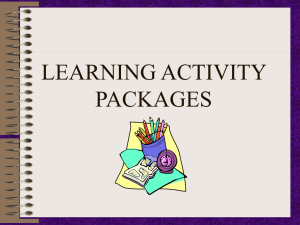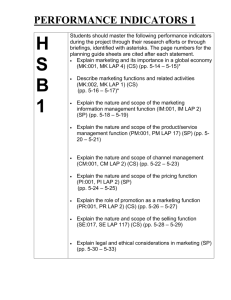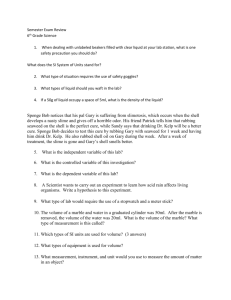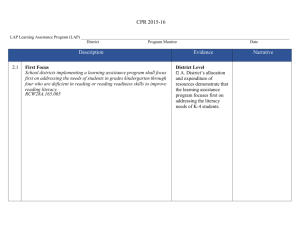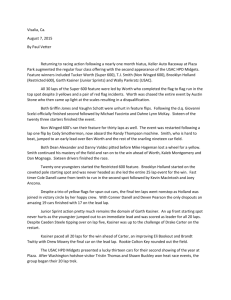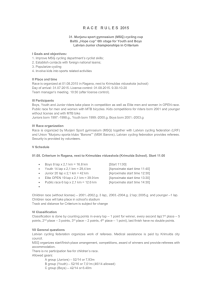Title I/LAP Targeted Assistance School Plan
advertisement
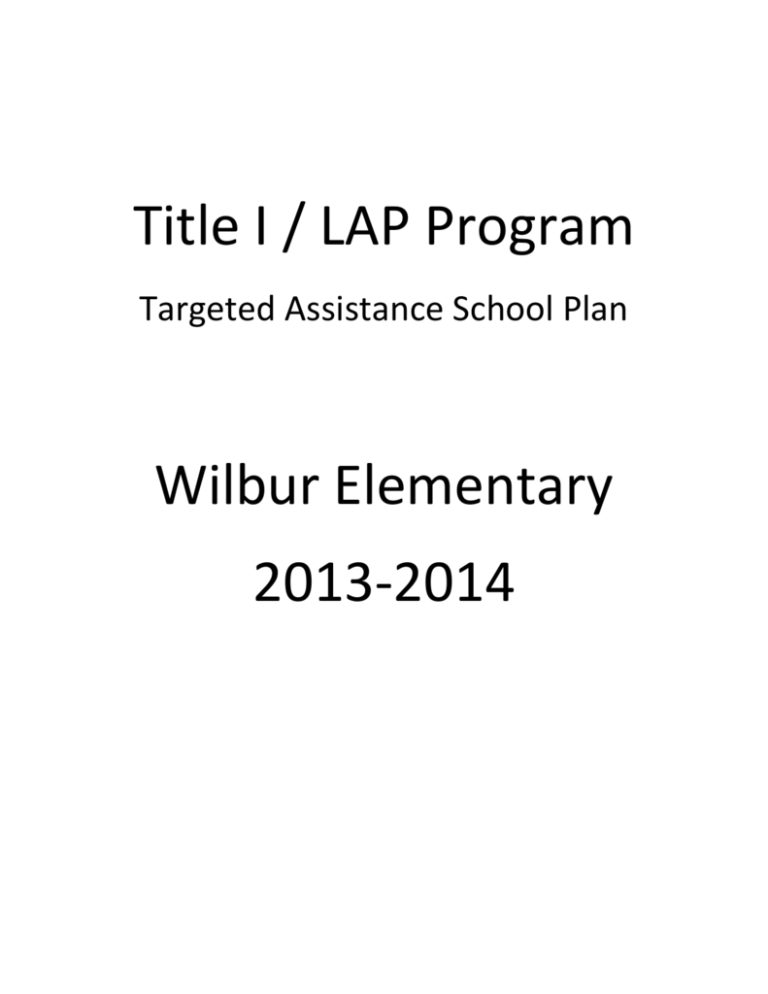
Title I / LAP Program Targeted Assistance School Plan Wilbur Elementary 2013-2014 Title I/LAP Program Application School: Wilbur Elementary School Signature of Principal: ______________________________________ Signature of parent(s) on Title I District Parent Advisory Council: ________________________________________________________ ________________________________________________________ ________________________________________________________ ________________________________________________________ ________________________________________________________ District Approval: __________________________________________ Date: ___________________________________________________ Section I: Program Description I. General Description At Wilbur Elementary School, the Title I/LAP Program is comprised of reading and math. The framework for the Title I/LAP Program at Wilbur Elementary School is based upon a calm, diversified, sequential, and individualized approach to instruction. The focus of each student’s program is centered toward the development of skills using a methodology that is most effective for improving achievement. This includes reading, writing, and math processes. II. Student Eligibility Teacher recommendations, classroom performance, standardized test scores, and diagnostic assessments are used to identify eligible students. This assessment procedure is ongoing, and eligibility is determined as soon as possible. III. Entrance Guidelines A principal, teacher, and/or parent may submit a referral. In September, reading and math ranking sheets are compiled by the Title I/LAP teacher. This sheet lists all Wilbur students by classroom. Students are designated points based on standardized test scores, diagnostic assessments, and teacher referrals. Those students with the most need and, thus, the most points, are admitted to the program. IV. Entrance Admission and Exiting of Students Title I Reading Exit *Below benchmark on DIBELS baseline reading assessment *Level 1 of Level 2 Washington State MSP score *Below grade level on STAR reading test *Teacher referral *Continuing students *Above benchmark on DIBELS baseline reading assessment *Level 3 or Level 4 Washington State MSP score *At or above grade level on STAR reading test *Teacher recommendation Entrance LAP Math Exit *Level 1 of Level 2 Washington State MSP score *Below grade level on STAR math test *Teacher referral *Continuing students *Level 3 or Level 4 Washington State MSP score *At or above grade level on STAR math test *Teacher recommendation V. Student Prioritization A. Reading/Math a. For Grades K-6, newly referred students are prioritized by the following criteria: i. Below grade level – Determined by STAR Assessments ii. Standardized test score – MSP iii. Teacher referral VI. Utilization of Title I/LAP Resources All students who are referred and qualify for the Title I/LAP program will be served. Scheduling of instruction is determined cooperatively by the classroom teacher and the Title I/LAP teacher. The program model includes individualized, small group, pullout, or in-class model. SECTION II: INSTRUCTIONAL PROGRAM I. Curriculum and Applied Listening Reading (grades K-6) The Title I reading program is a supplemental program that enhances the classroom curriculum while providing each student individualized assessment and instruction. Instruction is presented in interesting and motivational ways that are child-centered, developmentally appropriate, and promote active involvement. Math (grades 1-6) The math program is a pullout model that enhances the classroom curriculum while providing each student individualized assessment and instruction. Instruction is presented in interesting and motivational ways that are child-centered, developmentally appropriate, and promote active involvement. II. Extended Learning Time Strategies for extended learning time include: Home study activities Parent information letters Parent conferences that encourage parent-child study time. Instructional techniques are suggested to the parents. After school tutoring, research, study III. Instructional Models Reading: This program utilizes the pullout model. Washington State Title I research indicates the pullout model is most effective in remediation. Math: Pullout model used, under the direction of the classroom teacher or Title I/LAP teacher. IV. Curriculum Coordination with Regular Program An enriched curriculum is coordinated and supportive of the regular program with supplemental activities that reinforce and accelerate learning and vocabulary development. V. Planning Coordination in Existing School Planning Title I/LAP planning is incorporated into existing school planning through Title I/LAP classroom planning, scheduling with classroom teacher on weekly basis. The certificated Title I/LAP teacher is included in appropriate building and staff development meetings. Common Core State Standards are common denominators for both programs. Section III: Professional/Staff Development I. Commitment Wilbur Elementary School is committed to sustained professional staff development for certified and classified staff to ensure instruction by “highly qualified” professional staff. The Title I teacher has a major focus for continuous training for herself and staff. II. Opportunities for Professional Development District-wide staff development meetings School-wide staff development workshops Out-of-district workshops Technology workshops Grade level meetings ESD paraprofessional training Section IV: Parent Involvement I. Description Wilbur Elementary School has an on-site building plan that was developed and approved by the Parent Advisory Council. The goal of the Parent/Title I partnership is to increase parental involvement and participation in promoting social/emotional and academic growth of children. School-parent involvement at Wilbur Elementary School includes: II. A. B. C. D. E. F. A. Communication a. An annual meeting is held to explain Title I requirements b. Regularly scheduled meetings are held throughout the year at flexible meeting times. c. A school-parent agreement that outlines how parents, the steering committee, and students share the responsibility for improved student achievement has been developed. d. Parents are involved in an organized, ongoing, and timely way in the planning, review, and improvement of programs, including the parental involvement policy. e. Whenever possible, communication with families of participating children occurs in the language of that used in the home. f. Parents of participating children are provided information about programs, including: i. School performance profiles and assessment results ii. A description and explanation of curriculum assessment iii. The proficiency levels students are expected to meet B. Training and Providing Parent Education a. Participating parents are provided assistance in understanding the National Goals and state content and performance standards. b. Information is provided that helps parents work with the children (in home language, when possible). c. Teachers, principal, and other staff are educated on the value of parents’ contributions and how to reach out and communicate with families. C. Coordinating and Encouraging Community Outreach a. Linkages (if applicable) to community early education programs are fostered. b. Roles for community organizations and businesses in parent involvement activities are encouraged. Parental Involvement Strategies Steering Committee (comprised of parents, Title I reading teacher, staff and principal) formed to promote and develop activities that will motivate parents to participate actively in home/school connection activities Fall open house Parent conferences Family fun nights Informational and training meetings as needed Steering committee meetings as needed G. Home reading activities H. Home School Connection district newsletters I. District-wide curriculum and task-force committees In addition, the Title I teacher meets with individual parents for training in techniques to help parents reinforce reading skills with their children. III. District Parent Ad Council Parent involvement and decision-making is promoted by the formation of a District Parent Ad Council. Surveys and assessments are used to gather information. Records are kept documenting the number of parents involved in activities. Surveys are used to evaluate the existing parent activities. Specific training activities are offered for parents as designated and promoted by the existing Parent Advisory Council. Section V: Coordination and Planning Transition from Early Childhood Programs to Elementary School Programs Encouragement and support for students and parents coming into kindergarten from local preschool programs is given through the kindergarten readiness screening. There is also district involvement with the above listed programs. Coordination With Other Educational Services ESD 101 provides many services for staff (newsletters, ESD training, various workshops)
